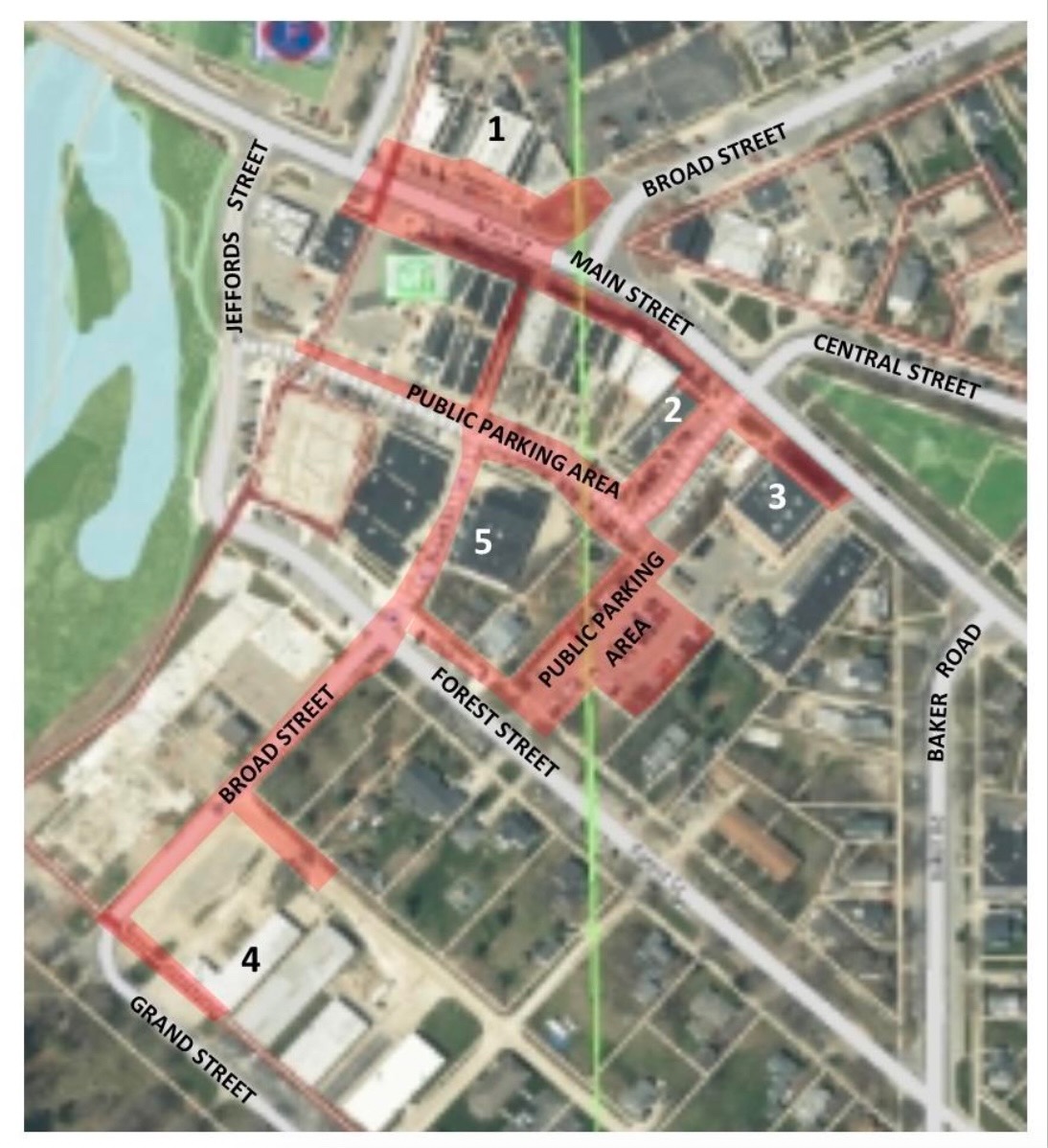The City of Saline took a proactive step on December 9, 2024, hosting a town hall meeting to discuss the future of the historic Mill Pond Dam. The well-attended meeting in council chambers presented findings from a recent Dam Removal Feasibility Study, presented data, and explored options for rehabilitating the dam and its potential removal.
Mayor Brian Marl opened the evening with clear expectations: “The city of Saline has not developed consensus on the future of our Mill Pond Dam…We’re here tonight to present the pros and cons, the costs of preserving the existing asset, and the pros, cons, and costs of removing the dam and creating a more natural space at Mill Pond Park.”
The Current State of the Dam
Saline City Engineer Tesha Humphriss began the presentation by outlining the dam’s history and condition. Built in its current form in 1973, the Mill Pond Dam sits within the River Raisin Watershed. The dam’s condition, currently rated as “fair,” shows clear signs of aging. Key issues include spalling concrete, exposed rebar, and critical cracks that could worsen without repairs.
Shawn Middleton, a civil engineer from the Spicer Group, underscored the importance of proactive planning, saying, “The good news is we’re ahead of the curve. If we don’t invest in the dam, it’s going to continue to degrade. It won’t self-heal.”
Middleton also noted that updated rainfall data could pose a challenge to the dam’s capacity. “With NOAA Atlas 14 data, we’re seeing larger storm events. If applied today, the dam would be pushed to its limits,” he warned.

Options on the Table
The presentation focused on two primary paths: rehabilitating the dam or removing it entirely.
Dam Rehabilitation
Rehabilitating the dam involves addressing immediate repairs, including concrete restoration and structural improvements.
- Estimated Immediate Repair Cost: $1–$1.5 million
- Long-term Replacement Cost: $6–$8 million
- Annual Maintenance Cost: Approximately $16,000
While rehabilitation preserves the historic structure and Mill Pond’s aesthetic, ongoing maintenance and liability concerns remain significant.
Dam Removal
The feasibility study examined sediment management, environmental impacts, and design considerations for removing the dam. Findings revealed that the impoundment holds 30% sediment, or the equivalent of 23 Olympic-sized swimming pools. Notably, sediment testing indicated no contamination, which simplifies removal costs.
- Estimated Dam Removal Cost: $4–$6 million
- Future Maintenance Costs: Minimal
Environmental specialist Aaron Snell shared potential ecological benefits of dam removal, including improved water quality and free passage for aquatic life. “If you’re a fish that needs to get up the river to spawn and you hit a dam, that’s the end of the road. Removal restores natural movement of fish, sediment, and organic material,” he said.
A Vision for Mill Pond Park
Renderings provided by the Spicer Group offered a glimpse of a post-removal future. If the dam is removed, Mill Pond Park would gain significant land area, transforming into an expansive natural space.
Potential additions include:
- Expanded trails connecting Mill Pond Park to Curtis Park, including a trail running under the US-12 bridge.
- New recreational features such as nature playscapes or open green spaces.
One rendering compared the current impoundment with a restored natural channel, highlighting the scale of land recovery.
Balancing Cost, Risk, and Heritage
Middleton emphasized that removing the dam eliminates future liability risks, as dam owners are legally responsible for damages caused by structural failure. “Owners of dams are liable—whether it’s economic, environmental, or loss of life,” he explained.
For those who favor keeping the dam, preserving history and aesthetics remain significant points of discussion.
Public Input Moving Forward
The City of Saline encouraged residents to share their feedback before making a final decision, expected in early 2025. The public comment period remains open until January 31, 2025. The presentation slides will be available on the city’s website, featuring all data and renderings.
Residents can submit their comments via email to:
- City Engineer Tesha Humphriss, thumphriss@cityofsaline.org
- Kevin Wilks, P.E., kevinw@spicergroup.com
Mayor Marl closed the evening by urging community engagement: “This decision will shape the future of Mill Pond Park. Your voices matter.”
For those unable to attend, the town hall was live-streamed and remains available on the City of Saline’s YouTube channel.






 8123 Main St Suite 200 Dexter, MI 48130
8123 Main St Suite 200 Dexter, MI 48130


